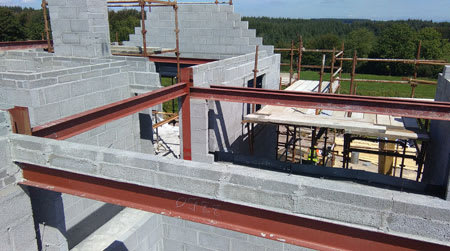MIStructE_IRE
Structural
- Sep 23, 2018
- 816
As simple as it gets.. we see it every day of the week.. But there’s never any connection between the blockwork and the beam’s topflange to transfer lateral wind load from wall panel to beam.
With hollowblock you could easily have rebar welded and concrete filled cores. But not with solid block or old brickwork.
Do you guys spec a physical connection or rely on friction… which I expect is minimal (mortar on smooth steel!).

With hollowblock you could easily have rebar welded and concrete filled cores. But not with solid block or old brickwork.
Do you guys spec a physical connection or rely on friction… which I expect is minimal (mortar on smooth steel!).


